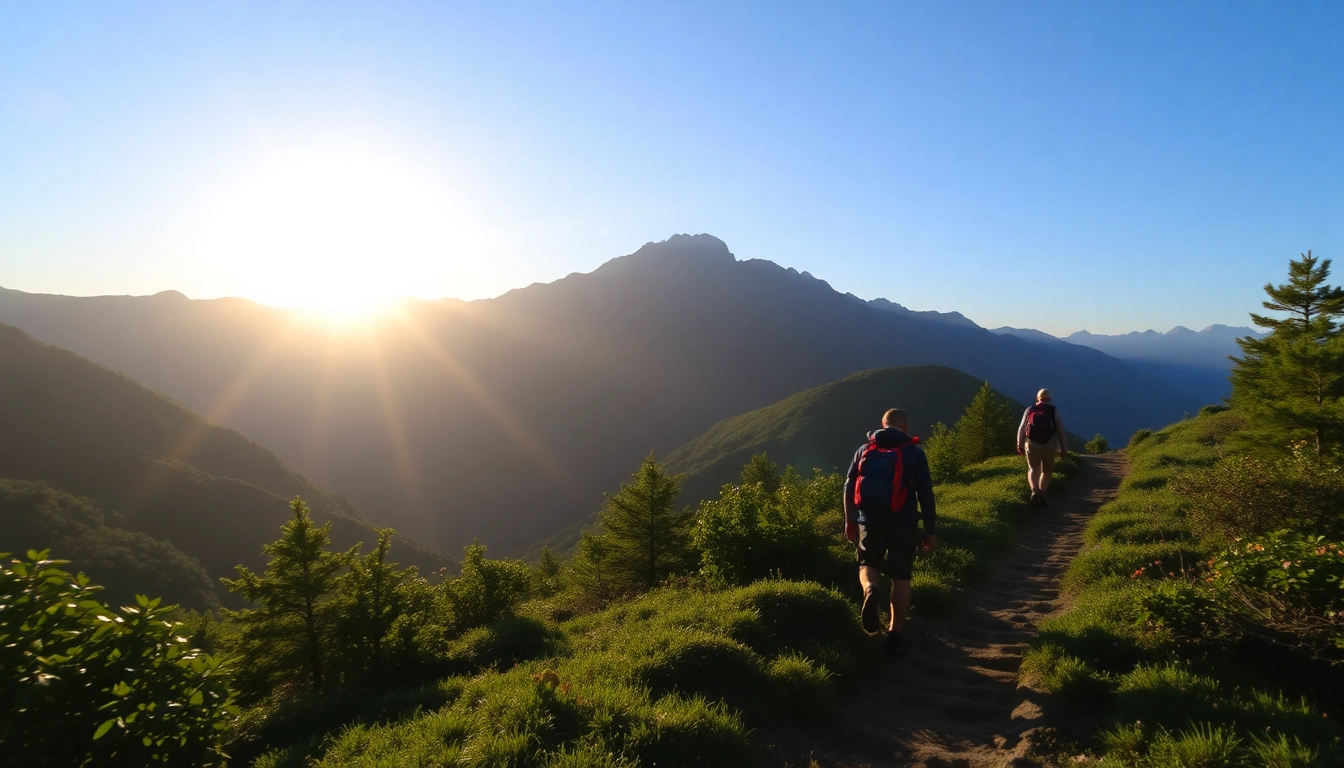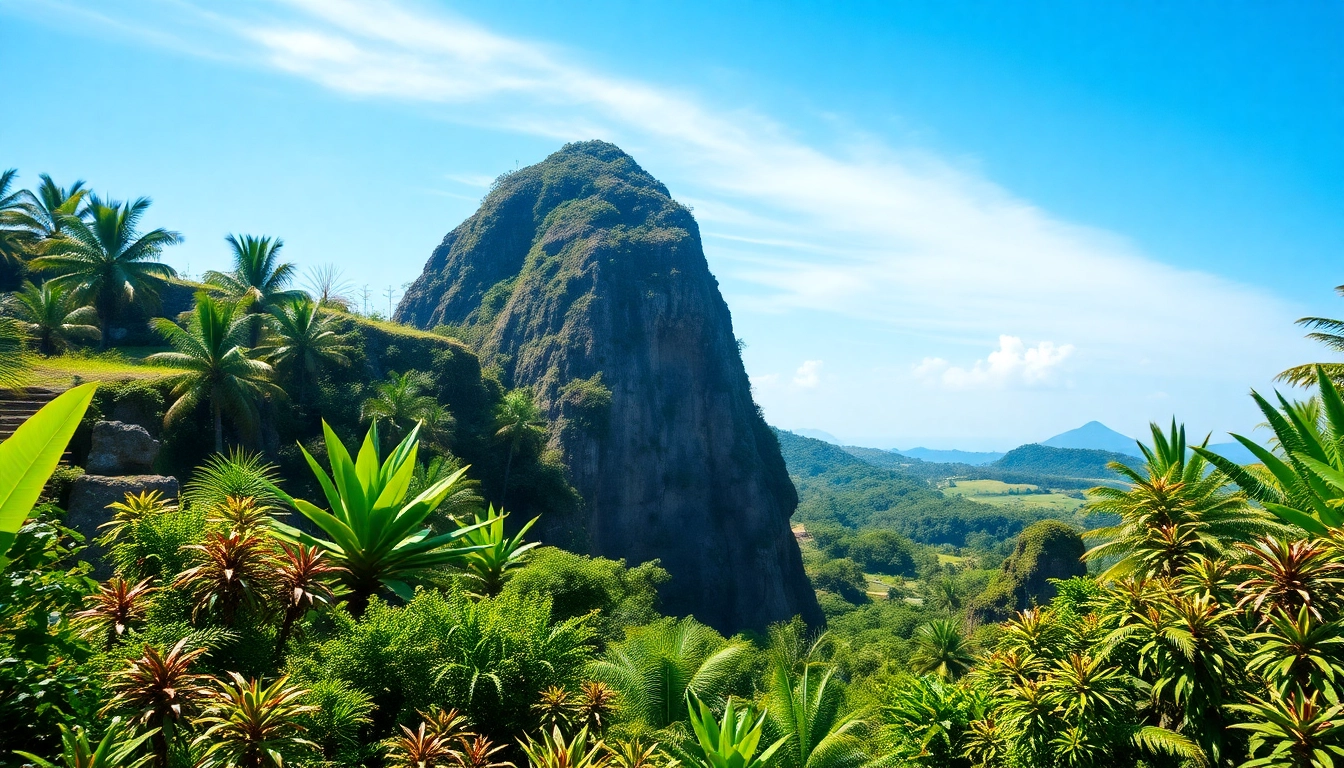Understanding Hiking: Definition and Benefits
Hiking, a beloved outdoor activity, has gained widespread popularity across the globe. It involves traversing natural terrains such as mountains, forests, trails, and rural pathways on foot, typically for recreation, exercise, or simply to connect with nature. This activity is accessible to a broad demographic, from seasoned adventurers to casual walkers seeking leisure. The essence of hiking isn’t just about physical movement; it’s an immersive experience that nurtures both mental well-being and physical health. Whether it’s an early morning trek to catch the sunrise or a weekend expedition exploring remote jungles, hiking opens a portal to adventure and serenity alike.
To truly appreciate the value of hiking, it’s beneficial to understand its historical evolution and cultural significance. The word “hike” originated from the old Scandinavian term “híka,” which means to move briskly on foot, emphasizing vigorous walking. Today, hiking has evolved into a structured activity with numerous variations, routes, and disciplines. The activity’s name might vary regionally—sometimes called trekking, hill walking, or rambling—but the core concept remains consistent: a long, purposeful walk through natural settings.
For those eager to embark on their hiking journey in Indonesia—a country renowned for its volcanic landscapes, lush rainforests, and scenic waterfalls—hike serves as a gateway to discovering some of the world’s most stunning outdoor landscapes. To explore more about hiking opportunities in Indonesia, including specific trails and safety tips, visit hike for comprehensive resources and local guides.
In addition to the physical exploration, hiking fosters mental clarity. It has been scientifically proven to reduce stress, improve mood, and enhance cognitive function. As rough terrains challenge your physical endurance and technical skills, they also catalyze personal growth and resilience. Whether you’re climbing volcanic slopes or meandering through jungle paths, each hike presents unique challenges and rewards that enrich your life experience.
Physical and Mental Health Benefits of Hiking
Physical Health Advantages
Engaging in regular hikes significantly boosts cardiovascular health, improves muscular strength, and enhances endurance. The varied terrains—ranging from gentle slopes to steep inclines—engage different muscle groups, promoting overall physical fitness. Studies show that moderate hiking can burn between 430 and 480 calories per hour, depending on pace and terrain, making it an effective activity for weight management.
Moreover, hiking improves bone density through weight-bearing movement, mitigates the risk of chronic illnesses such as hypertension and diabetes, and enhances flexibility. Incorporating elevation changes and uneven surfaces mimics functional movements necessary for daily life, ensuring a holistic approach to health.
Mental and Emotional Well-being
Beyond physical health, hiking offers profound mental health benefits. Immersing oneself in nature reduces stress hormones like cortisol and promotes relaxation. In fact, nature exposure has been linked to decreased symptoms of anxiety and depression.
Hiking also fosters mindfulness—being present in the moment, appreciating the scenery, sounds, and smells. This mindfulness aspect enhances mental clarity and emotional resilience, crucial for coping with modern-day stressors. Many mental health professionals now recommend outdoor activities such as hiking as adjunct therapy for mental health conditions.
It’s important to note that consistent outdoor activity can catalyze sustained mental health improvements, fostering a sense of achievement and purpose. The social aspect—joining hiking groups or community events—adds to the emotional uplift by building social connections.
Different Types of Hikes for Various Skill Levels
Beginner-Friendly Trails
For newcomers, beginner trails are typically scenic, flat, and well-marked. These routes are perfect for acclimating to outdoor walking, understanding basic navigation, and developing endurance. An example is forest paths or park trails with minimal elevation changes, such as those near urban areas or national parks.
Intermediate and Moderate Trails
Intermediate hikes introduce moderate elevation gains, uneven terrains, and longer distances, requiring increased stamina. These trails might include hill climbs, rocky paths, and crossing streams. These are suitable for hikers looking to challenge themselves while still maintaining safety and comfort.
Advanced and Technical Hikes
Many seasoned hikers seek out challenging routes that involve steep ascents, high elevations, and technical skills such as scrambling or off-trail navigation. Mountain peaks, remote jungles, or volcanic climbs fall into this category. Proper planning, experience, and specialized gear are essential for these adventures.
In Indonesia, iconic routes like Mount Rinjani or the volcanoes in Java exemplify advanced hiking experiences that offer breathtaking vistas and demanding physical challenges. Regardless of the skill level, it’s vital to select trails compatible with your experience and fitness levels to ensure safety and enjoyment.
Planning Your Hike: Essential Preparation
Selecting the Right Trail and Route
Effective hiking begins with thorough planning. Research trails based on your skill level, desired distance, terrain preference, and scenic interest. Map out the route using topographical maps or reliable hiking apps. Consider factors such as access points, water sources, and emergency exit routes. In Indonesia, diverse environments—from volcanic regions to jungle waterfalls—offer a multitude of options suited for different interests and difficulty levels.
Consult local guides or park authorities to get the latest trail conditions and recommended routes. Guided hikes often include safety assurances and enriched cultural insights, making your experience more meaningful.
Gear and Equipment Needed for a Safe Hike
Selecting appropriate gear is crucial. Essential items include sturdy hiking boots, weather-appropriate clothing, a backpack, navigation tools (map, compass, GPS device), and safety equipment (first aid kit, flashlight). Additionally, carry sufficient water, high-energy snacks, sun protection, insect repellent, and multi-tool multi-purpose items.
Investing in quality gear, especially comfortable footwear and moisture-wicking clothing, improves comfort and reduces injury risk. When hiking in Indonesia’s humid environments, breathable fabrics and insect protection become particularly important.
Safety Tips: Weather, Navigation, and Emergencies
Weather can change rapidly, especially in mountainous regions. Always check forecast updates before setting out and be prepared for sudden rain or temperature drops. Navigation skills are vital—use GPS devices with downloaded maps or physical maps and compasses. Mark key waypoints and stay on designated trails to prevent getting lost.
Prepare for emergencies by carrying a whistle, emergency blanket, and a communication device such as a fully charged mobile phone with local emergency numbers. Inform someone of your route and expected return time. In remote Indonesian trails, local guides can significantly enhance safety and navigation.
Hiking Techniques and Best Practices
Proper Hiking Posture and Energy Conservation
Maintaining correct posture—standing upright, engaging core muscles, and keeping shoulders relaxed—reduces fatigue and injury risk. Use a balanced stride, leaning slightly forward on steep inclines to conserve energy. Taking regular, smaller steps helps maintain a steady pace and reduces muscle strain.
Implementing energy-saving techniques such as pacing yourself, using trekking poles, and maintaining a consistent rhythm makes longer hikes more manageable. Proper hydration and nutrition during the hike sustain your stamina and mental alertness.
Leave No Trace Principles to Protect Nature
Practicing eco-friendly hiking is vital for preserving Indonesia’s pristine landscapes. Follow Leave No Trace principles: pack out all trash, avoid picking plants or disturbing wildlife, stay on established trails, and minimize campfire impacts. Respect local cultures and adhere to park regulations.
Managing Pace and Hydration During the Hike
Adopt a sustainable pace suited to your fitness level, avoiding overexertion that leads to exhaustion. Regularly drink water—aim for at least 500 ml every hour—and replenish electrolytes if needed. Use lightweight hydration packs or bottles for convenience. Recognize signs of dehydration and fatigue early to adjust pace accordingly.
Popular Hiking Destinations in Indonesia
Mount Rinjani and Other Volcanic Hikes
Mount Rinjani, Indonesia’s second-highest volcano, is a flagship destination for experienced hikers. Its challenging ascent offers panoramic views, geothermal craters, and the Rinjani Lake. Most routes take 2-3 days with acclimatization, requiring proper preparation due to altitude and volcanic terrain.
Additionally, Mount Bromo, Mount Semeru, and Mount Kerinci provide diverse volcanic hikes with varying difficulty levels, making Indonesia a hotspot for volcano enthusiasts.
Hidden Gems: Waterfalls and Jungle Trails
Indonesia’s tropical rainforests abound with lesser-known hiking spots like the Sekumpul Waterfall in Bali or the Madakaripura Waterfall near Mount Bromo. Jungle trails through protected forests showcase diverse flora and fauna, offering tranquil escapes from urban bustle.
Hiking Tours and Guided Experiences Available Locally
Many local operators provide guided hikes, catering to different skill levels and interests. These can include cultural tours, wildlife watching, or adventure excursions. Guided trips ensure safety, local insights, and opportunities to explore remote areas inaccessible to solo hikers.
Enhancing Your Hiking Experience with Technology and Community
Using Apps and Devices for Trail Navigation and Tracking
Modern technology has revolutionized hiking. GPS apps like AllTrails, Gaia GPS, and MapMyHike offer detailed trail maps, elevation profiles, and off-line access, vital for remote Indonesian paths. Fitness trackers monitor health metrics, pace, and distance, motivating progress and ensuring safety.
Additionally, smartwatches with GPS and heart rate sensors provide real-time data to optimize performance and safety during hikes.
Joining Local Hiking Groups and Events
Connecting with local or international hiking communities enhances safety, motivation, and cultural exchange. Many Indonesian regions host regular group hikes, training sessions, and adventure festivals. Joining these groups facilitates knowledge sharing, safety oversight, and building lifelong friendships.
Sharing Your Hikes on Social Media and Building Community
Documenting your hikes through photos and stories fosters a sense of achievement and inspires others. Platforms like Instagram, Facebook, and specialized hiking forums help share experiences, tips, and trail reviews. Creating or participating in local Hike meetups strengthens community bonds and promotes responsible outdoor recreation.

